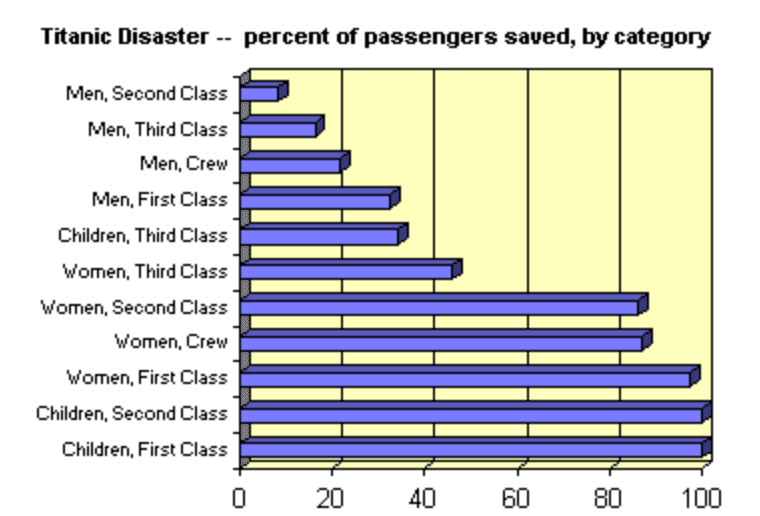RMS Titanic


RMS Titanic was a British passenger liner, operated by the White Star Line, which sank in the North Atlantic Ocean on 15 April 1912 after striking an iceberg during her maiden voyage from Southampton, England, to New York City, United States. Of the estimated 2,224 passengers and crew aboard, more than 1,500 died, making it the deadliest sinking of a single ship up to that time. It remains the deadliest peacetime sinking of an ocean liner or cruise ship. The disaster drew public attention, provided foundational material for the disaster film genre, and has inspired many artistic works.[1]
RMS Titanic was the largest ship afloat at the time she entered service and the second of three Olympic-class ocean liners operated by the White Star Line. She was built by the Harland and Wolff shipyard in Belfast. Thomas Andrews, the chief naval architect of the shipyard, died in the disaster. Titanic was under the command of Captain Edward Smith, who went down with the ship. The ocean liner carried some of the wealthiest people in the world, as well as hundreds of emigrants from Great Britain and Ireland, Scandinavia, and elsewhere throughout Europe, who were seeking a new life in the United States and Canada.[2]
The first-class accommodation was designed to be the pinnacle of comfort and luxury, with a gymnasium, swimming pool, smoking rooms, high-class restaurants and cafes, a Turkish bath and hundreds of opulent cabins. A high-powered radiotelegraph transmitter was available for sending passenger marconigrams and for the ship's operational use. Titanic had advanced safety features, such as watertight compartments and remotely activated watertight doors, contributing to its reputation as "unsinkable".[3]
Titanic was equipped with 16 lifeboat davits, each capable of lowering three lifeboats, for a total of 48 boats; she carried only 20 lifeboats, four of which were collapsible and proved hard to launch while she was sinking (Collapsible A nearly swamped and was filled with a foot of water until rescue, Collapsible B completely overturned while launching). Together, the 20 lifeboats could hold 1,178 people—about half the number of passengers on board, and one third of the number of passengers the ship could have carried at full capacity (consistent with the maritime safety regulations of the era). When the ship sank, many of the lifeboats that had been lowered were only filled up to an average of 60%.[4]
Survivors
The number of casualties of the sinking is unclear, due to a number of factors. These include confusion over the passenger list, which included some names of people who cancelled their trip at the last minute, and the fact that several passengers travelled under aliases for various reasons and were therefore double-counted on the casualty lists. The death toll has been put at between 1,490 and 1,635 people. The tables below use figures from the British Board of Trade report on the disaster.[5]
Fewer than a third of those aboard Titanic survived the disaster. Some survivors died shortly afterwards; injuries and the effects of exposure caused the deaths of several of those brought aboard Carpathia. The figures show stark differences in the survival rates of the different classes aboard Titanic. Although only 3% of first-class women were lost, 54% of those in third-class died. Similarly, five of six first-class and all second-class children survived, but 52 of the 79 in third-class perished. Consistent with the principle of women and children first, the differences by gender were even bigger: nearly all female crew members, first- and second-class passengers were saved. Men from the First Class died at a higher rate than women from the Third Class. In total, 50% of the children survived, 20% of the men and 75% of the women.[6]
| Age/ |
Class/ |
Number aboard | Number saved | Number lost | Percentage saved | Percentage lost |
|---|---|---|---|---|---|---|
| Children | First Class | 6 | 5 | 1 | 83% | 17% |
| Second Class | 24 | 24 | 0 | 100% | 0% | |
| Third Class | 79 | 27 | 52 | 34% | 66% | |
| Women | First Class | 144 | 140 | 4 | 97% | 3% |
| Second Class | 93 | 80 | 13 | 86% | 14% | |
| Third Class | 165 | 76 | 89 | 46% | 54% | |
| Crew | 23 | 20 | 3 | 87% | 13% | |
| Men | First Class | 175 | 57 | 118 | 33% | 67% |
| Second Class | 168 | 14 | 154 | 8% | 92% | |
| Third Class | 462 | 75 | 387 | 16% | 84% | |
| Crew | 885 | 192 | 693 | 22% | 78% | |
| Total | 2,224 | 710 | 1,514 | 32% | 68% | |
See Also
External Links
Wikipedia
This article contains information imported from the English Wikipedia. In most cases the page history will have details. If you need information on the importation and have difficulty obtaining it please contact the site administrators.
Wikipedia shows a strong woke bias. Text copied over from Wikipedia can be corrected and improved.
References
- ↑ https://en.wikipedia.org/w/index.php?title=Titanic&oldid=1156480010
- ↑ https://en.wikipedia.org/w/index.php?title=Titanic&oldid=1156480010
- ↑ https://en.wikipedia.org/w/index.php?title=Titanic&oldid=1156480010
- ↑ https://en.wikipedia.org/w/index.php?title=Titanic&oldid=1156480010
- ↑ https://en.wikipedia.org/w/index.php?title=Titanic&oldid=1156480010
- ↑ https://en.wikipedia.org/w/index.php?title=Titanic&oldid=1156480010
- ↑ https://archive.is/a8ByY